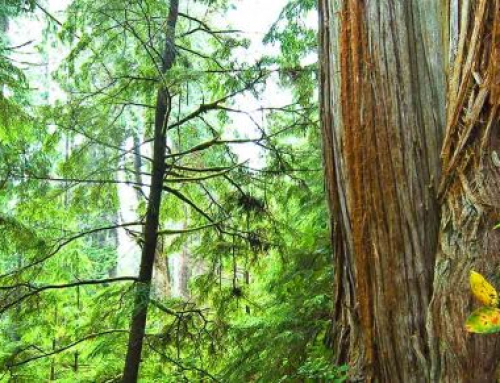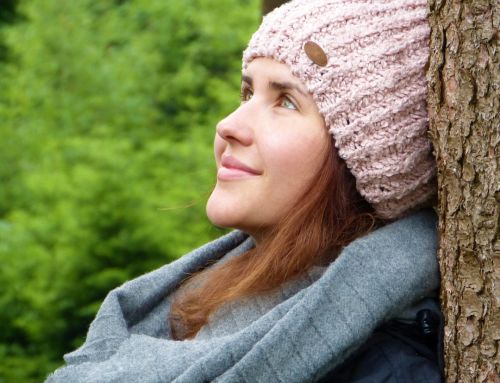
Nut roast as an alternative low carbon roast
Five ways to go low carbon this Christmas
-
Celebrate with good food
Make your festive dishes even more delicious this year by getting organic meat and veg that has been produced as locally as possible. British grass fed meat has ¼ the carbon footprint of the average imported meat. Organic vegetables have a lower footprint and avoid pesticides, so help our wildlife and birds flourish too.
Try minimising waste by using leftovers for soups or other meals. Be sure to compost any food waste you do have. Properly recycled kitchen waste decomposes aerobically. In contrast to going to a landfill, where it breaks down anaerobically, with 50 times greater greenhouse gas emissions. This is why composting makes a huge difference. Our food waste, including chopping from veggies and fruit peelings, is a really important part of climate change. Furthermore, composted kitchen waste eventually returns to the garden, enriching the earth.
-
Eco-crackers a go go
The good news is that there are now a number of companies producing Christmas crackers made from recycled, plastic-free materials. Just search “Eco-friendly Christmas crackers” to find offers from independent companies and high street names.
-
Clever ways to avoid the excessive packaging
For wrapping pressies, use newspaper, recycled wrapping, or brown paper. For something different try the Japanese tradition of using cloth. We recommend using recycled wrapping paper to help keep existing trees standing. Every tree is a carbon absorbing machine. Its entire trunk is made of carbon absorbed from the air. So every tree that we can leave standing is helping to avert climate change.
-
Branch out from Christmas trees
Bringing greenery into the house at yuletide is a very old tradition, possibly pre-christian, which celebrates nature and reminds us that green things will grow again. In the “real tree vs artificial tree” debate, the Carbon Savvy answer is a Christmas branch. This can be leafy or bare, big or small, and you might be able to cut one yourself from a forest or garden. Most florists also stock pretty willow cuttings. If you have a tree in your garden, filling that with lights is one way to create beauty for you and passers-by too.
Studies show real Christmas trees from sustainable sources are lower carbon than plastic trees. – It’s better to get smaller trees, and most importantly – make sure they are chipped or composted afterwards.
-
Christmas cards for moments of joy
You might be surprised to hear that Carbon Savvy supports sending Christmas cards. A typical Christmas card, including postage, emits about 0.2 kg of CO2 – so for 20 cards that would be 4 kg of CO2. The average person’s daily CO2 emissions in the UK is 35kg, so Christmas cards are only a fraction of one day’s carbon footprint. ,Since it’s but once a year, we think it is a small carbon footprint for a great deal of joy, pleasure and connection.
At Carbon Savvy we’re all about increasing quality of life; cut the dull emissions and keep the fun ones. Christmas cards can be a big part of connecting us with our friends and loved ones. Just remember to recycle them in January! In the normal rubbish they would decompose anaerobically and create methane, a powerful greenhouse gas. If recycled, they avoid the greenhouse gas produced when decomposing, avoid cutting down more trees, and can be made into more paper.
You might be wondering about the difference between sending a Christmas email or a physical card. An email without images has a carbon footprint of only 4g, much less than a card or letter. If it comes with a photo or image attached it emits around 50g of CO2 which is ¼ of the footprint of a letter. We think real cards create more enjoyment for more days. However if e-cards are your choice you’ll be pleased to know they have a smaller carbon footprint.
The perfect present for getting savvy on CO2
If you know someone who would love to get super savvy on the easiest ways to get to net zero while raising quality of life, the Carbon Ambassadors Flexible Learning Course could be the perfect present. With seven sessions to complete in your own time, it features exciting, well-known special guest speakers from across the eco-world including: Satish Kumar, founder of Schumacher College and editor of Resurgence magazine; Nic Marks, developer of the Happy Planet Index; and Penney Poyzer, BB2 presenter of “No waste like home”. Topics include: Carbon Footprinting, Travel, Shopping, Holidays, Quality of Life, Homes, Food, and a bonus session on Offsetting.
Special pilot price £39.00 click here to find out more
Feel good about Christmas shopping
Our recent blog covers ways to shop that are good for both you and the planet. Click here for our ten top tips on shopping introduced by “Britain’s greenest family”.
Thinking ahead to the New Year
Find yourself thinking about your new year’s resolutions over the festive period? Would you like to do your bit to get to net zero? Look out for our next mailing in early January on how to be a Carbon Saver. If you’re not already on it, click here to join our mailing list
Here’s wishing you a thoroughly enjoyable, low carbon Chrismas
The Carbon Savvy team





